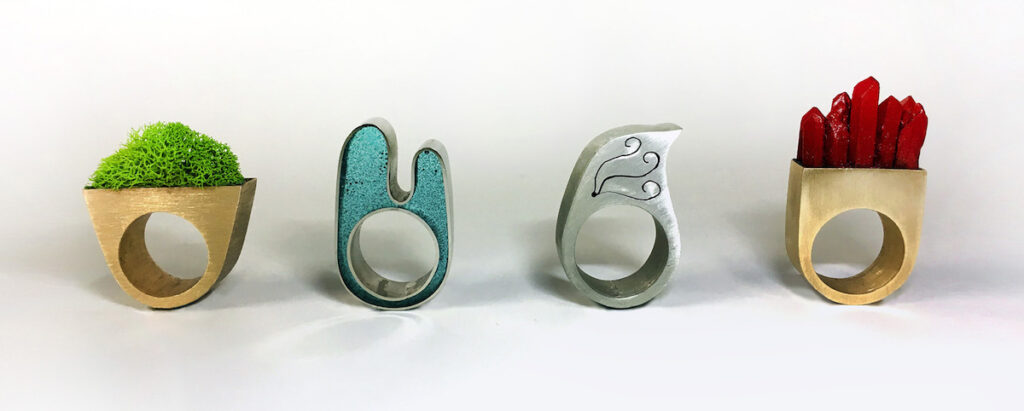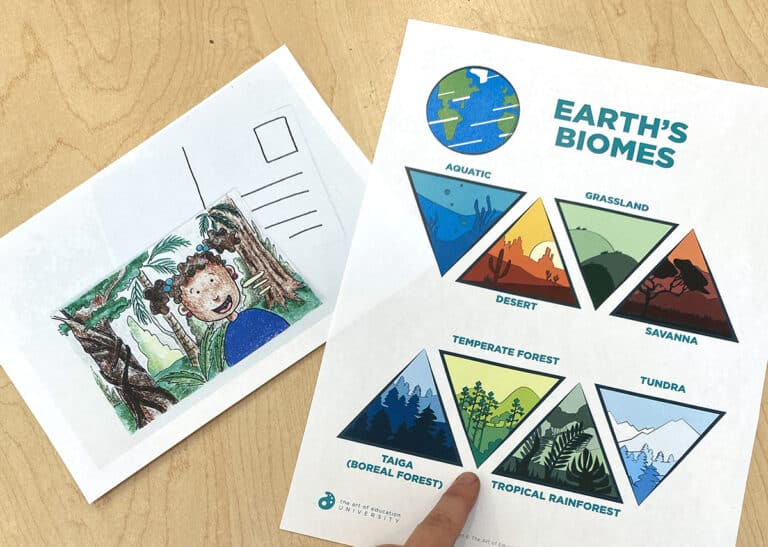If you’ve been teaching for years, then you know how new trends in education and initiatives ebb and flow. This leaves us wondering, why stray from our tried-and-true approaches when it seems so successful? It’s so much easier to stick within our comfort zone, especially when we are spread thin between expectations from our administration or the validation from our communities through art competitions and shows.
So, when a teacher does take the time to reassess what they are doing, it should be celebrated for the passion and drive toward the betterment of their student learning. Coming from a place of positive intent, it is clear we are all passionate about art and teaching, and these stigmas about following a certain method of teaching often stem from a place of vulnerability and insecurity.
At the beginning of my philosophical transition to a choice-based curriculum, I reflected on my teaching practice and found there were holes in our curriculum. There were big-picture connections our students weren’t making. They weren’t taking the necessary risks in learning. For my students, this had to change. To do so, I moved forward with a choice-focused curriculum.
Here are five myths about a choice-based curriculum.
1. “My students can’t handle choice.”
Often this comment is coupled with, “I offered full choice to my students and they reverted to the cliche they know and love. They just don’t know what to do when they have full choice. It won’t work for them.” All students are ready for choice if you teach it to them explicitly. When you teach a highly structured, teacher-driven curriculum, it is nearly impossible to provide an assignment of full choice and expect them to create amazing, thoughtful artworks without significant supports. In fact, you are inadvertently setting them up for failure because you haven’t explicitly taught them how to think and work on their own. When teaching in a choice classroom, even choice itself has to be scaffolded to ensure all students are successful.

2. “It’s a free-for-all! What are you even teaching students?!”
There’s actually a significant amount of structure and highly appropriate scaffolding provided to build confidence and competence. It may absolutely appear like chaos in the classroom, but it’s highly orchestrated chaos. Routines and expectations are set into motion early on, allowing students to access what they need when they need it. Scaffolding is put into place through both technical development and conceptual supports, as well as a variety of levels of choice. to prepare students for confident artmaking. In a strong choice curriculum, both technical and conceptual skill building come together for students to create quality, meaningful artwork.

3. “The quality of choice artwork is terrible! You don’t teach any technical skills!”
Actually, I’ve noticed the quality of my students’ artwork does not decrease. Instead, the artwork becomes individual and unique to each student’s artistic voice, which is not always what we deem as successful because their outcome doesn’t always align with our highly professional expectations. Just as mentioned above, students are continually practicing and honing their technical skills alongside stretching their conceptual ideation. When teaching technical skills, I use the same tried-and-true exercises and projects, but on a much smaller scale. This way, students can move on to practicing skills that help demonstrate those chosen skills in their artwork. Taking risks is something I value greatly and is something my students need to practice on a daily basis. If I value taking risks, then I can’t expect my students to always end up with highly polished artwork each and every time. It’s important to teach students how to reflect upon and curate their artwork evaluating a successful product versus a successful process.
4. “That artwork is impossible to grade! How can you assess it when it all looks so different?”
Well, there is some truth to this one, depending on how you look at it. When teaching a choice curriculum, you have to assess based on criteria that reflect your core values. For example, prior to choice, I would have assessed artwork based on some pretty cut-and-dried criteria such as one to three specific technical skills, the use of elements/principles, composition, and reflection. Instead, I now assess my students on a different set of criteria including technical skills they are choosing to demonstrate, visual storytelling (through elements/principles and composition), their creative process, and risk-taking. Their reflections become a separate formative grade as these also contribute to their overall Growth Portfolio.

Does the final assessment take a little longer? Perhaps, but I will say it is much more exciting and engaging to discuss and assess when each artwork is uniquely engaging. The other phenomenon is that you are constantly aware of ongoing progress, being able to provide feedback daily because you know at all times where each of your students is in their learning process. Their unique artistic voice that shines through in their work allows you to consider their individualistic needs and not compare among students. Because you can literally see these specific needs clearly, you can constantly and consistently assess progress and growth, providing intervention and extension in an authentic and supportive manner. When assessing final artworks, you may not even need to provide as much feedback, because students will have received it consistently throughout their creative process.
5. “Not all students are learning the same. How do you know what they are leaving your class with?”
While the discrepancy of achievement does become greater, this gap allows for more authentic opportunities for intervention and extension. The core values and essential standards of artistic development within your curriculum serve as a baseline for meeting expectations and targets. Anything above your “need to know” simply enhances your curriculum, allowing students to soar beyond your prescribed outcomes. When working with another school in your district, or even within your own department, student standards are set and need to be met, therefore all students will receive and develop the foundational skills needed to move to the next level.

What I’ve noticed, however, is that not only are they technically competent, as with a teacher-directed classroom, but they are conceptually confident in demonstrating their artistic voice, which prepares them by leaps and bounds for advanced levels, college, and beyond. By providing students opportunities to grow at their own pace and interest level, we are empowering students in their own learning.
Learn more about choice curriculums with Organizing the Art Room for Choice and Transitioning From Traditional to Choice Curriculum PRO Packs.
Not all choice classrooms look the same. It’s important to continue to challenge overarching, generalized statements by listening to experts in the field or by engaging in authentic observations. Not all approaches will work for you and your students, but it is essential to continually assess your core values and question how your current teaching practice is reflecting those values.
What are some preconceived notions you have about a particular educational practice?
How can you combat stigmas through research and engaging in a practice outside of your comfort zone?
Magazine articles and podcasts are opinions of professional education contributors and do not necessarily represent the position of the Art of Education University (AOEU) or its academic offerings. Contributors use terms in the way they are most often talked about in the scope of their educational experiences.





